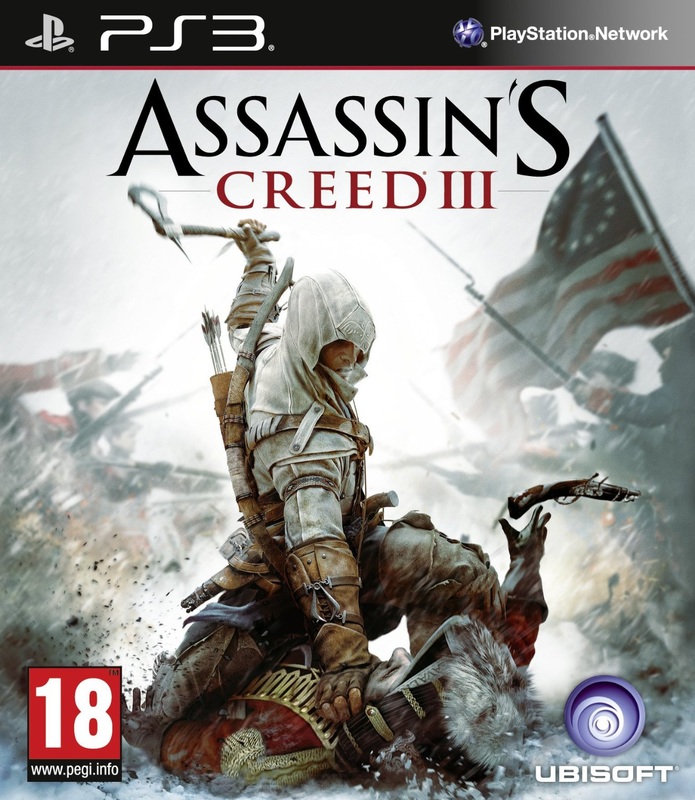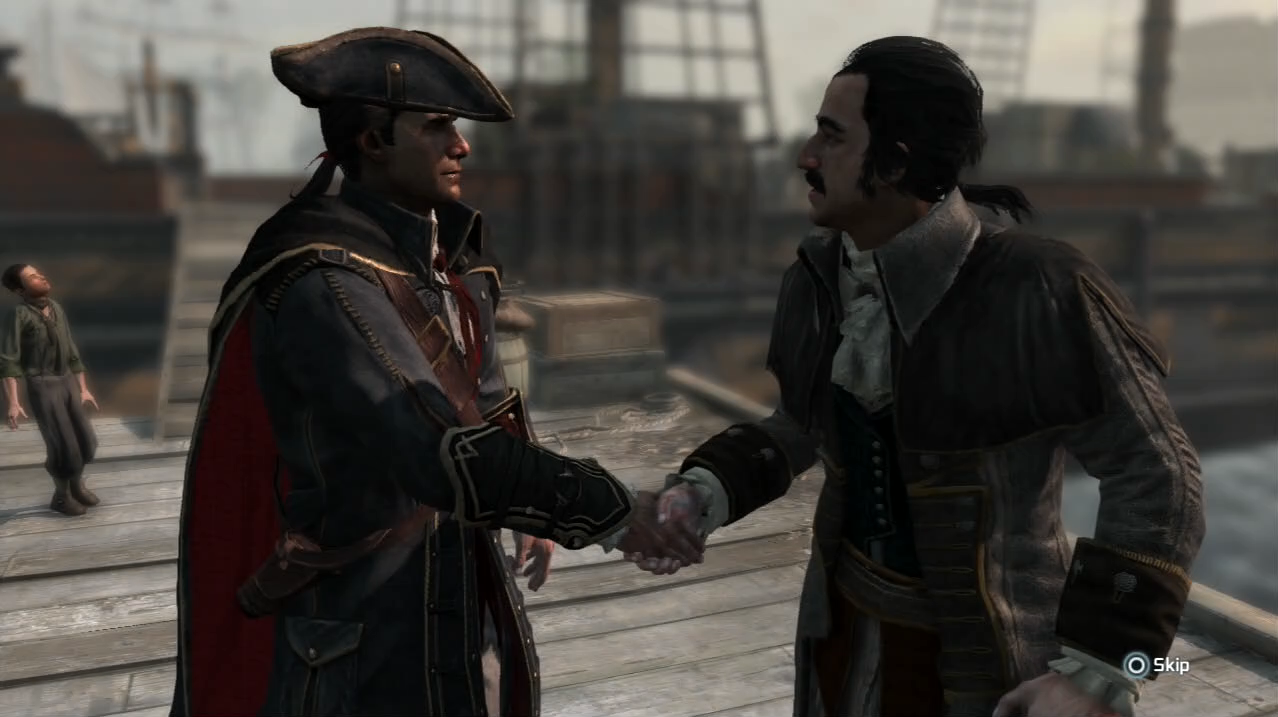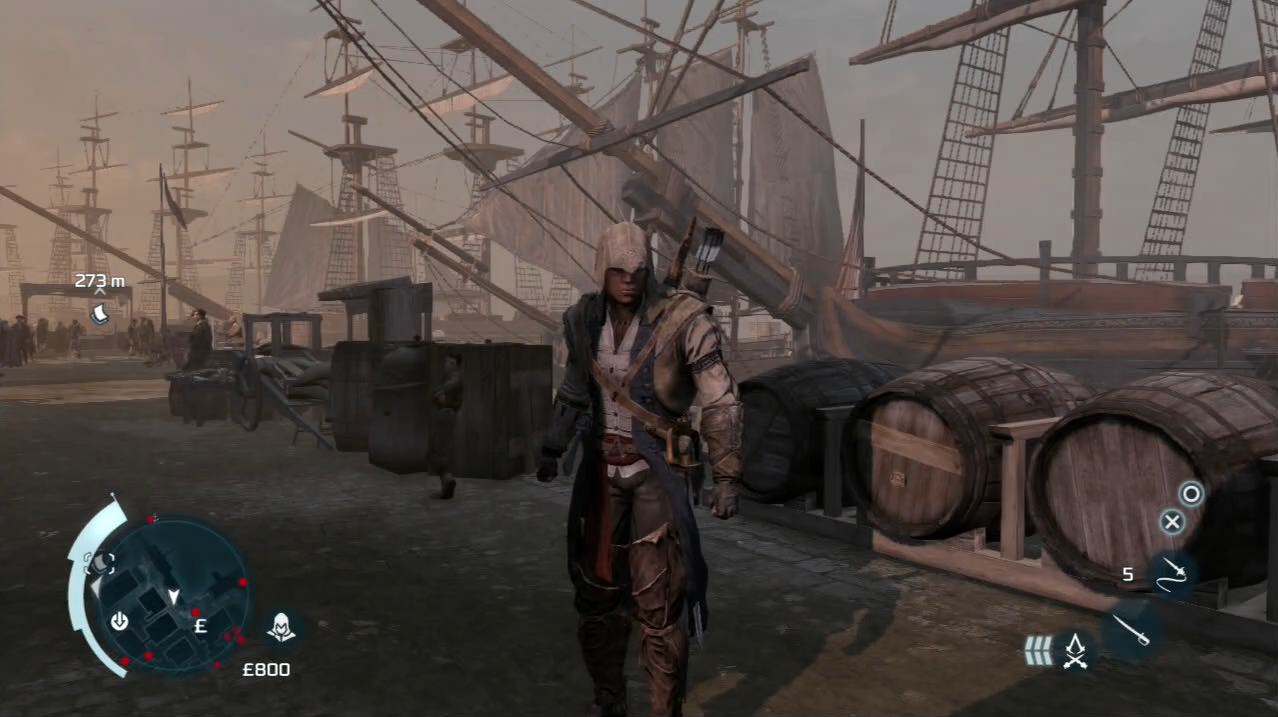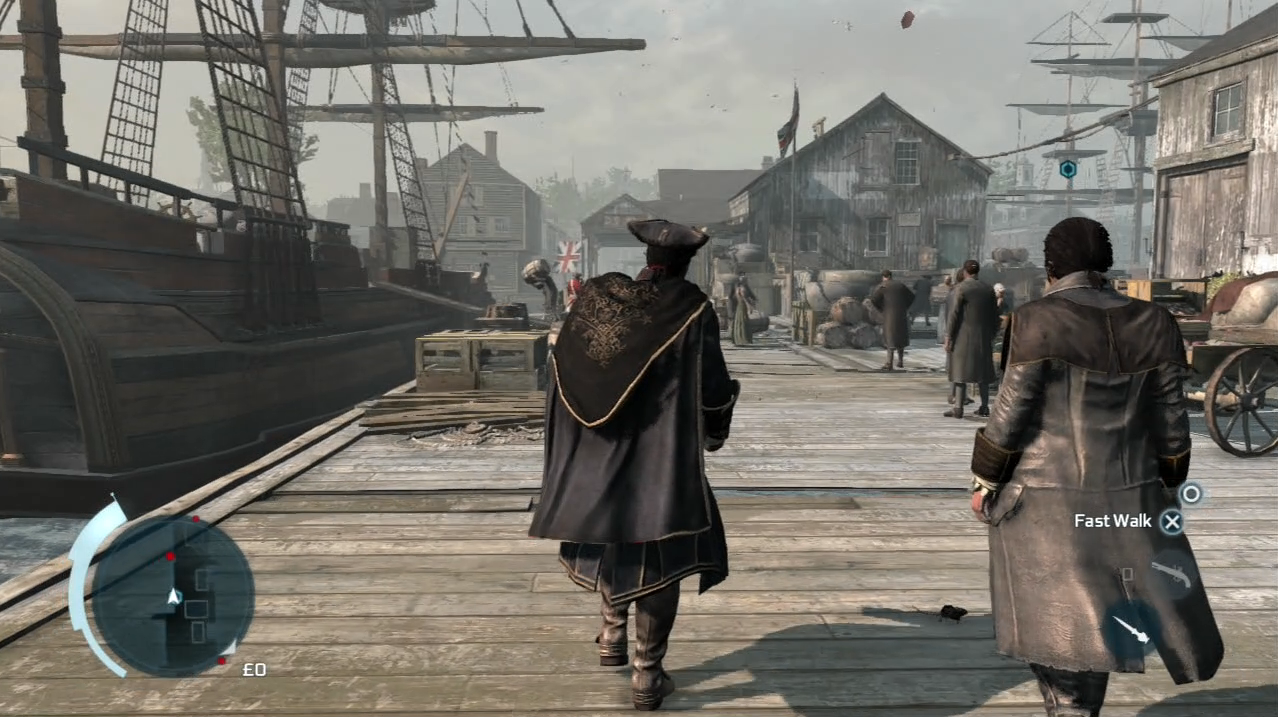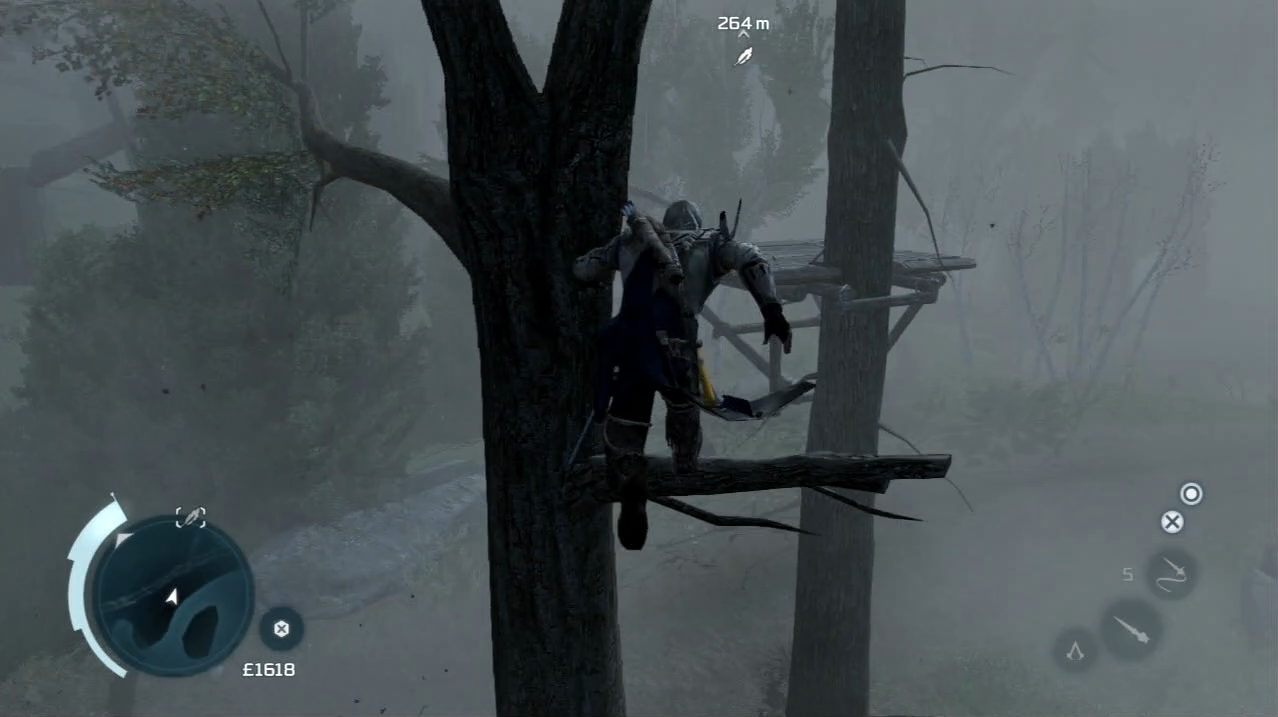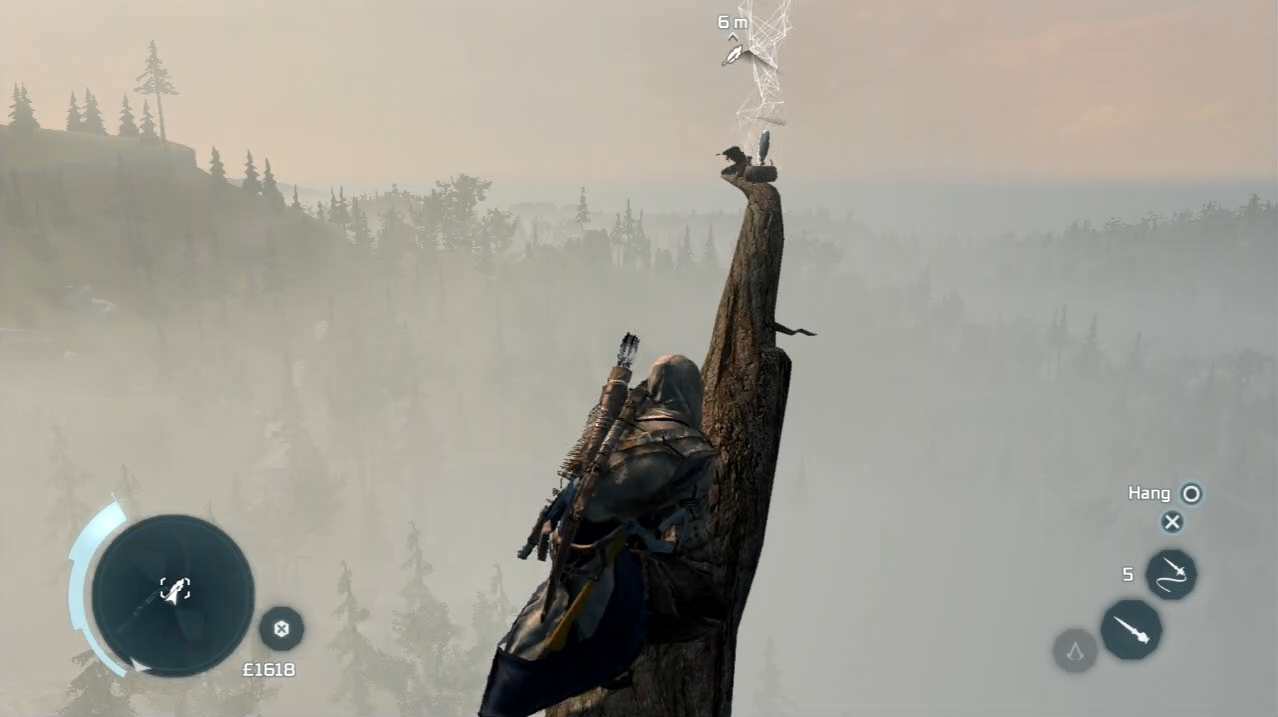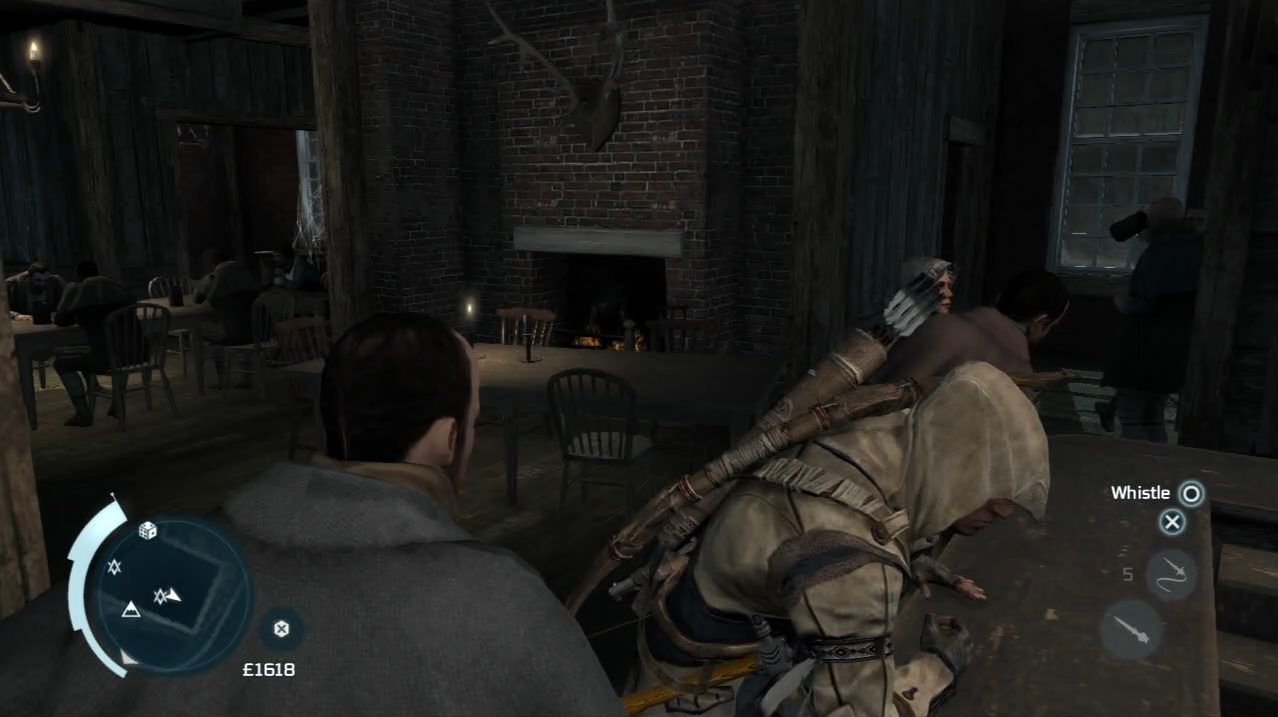ASSASSIN'S CREED III (PS3)
The first significant new Assassin’s Creed game for three years, ACIII made the bold statement of leaving behind the European renaissance splendour with which the series had enjoyed much success, setting out the next chapter of its vision amidst the vast, rural frontiers of the New World. Untidy gameplay mechanics clash with an ageing format and overly-familiar tropes, whilst missteps in both story articulation and environment design prove as unexpected as they are unwelcome.
The player controls a Native American assassin known as Connor, as he fights the Templars in another cloak and dagger feud that simmers beneath the broader struggles wrought by the War of Independence. Assassin’s Creed III’s biggest stumbling block – and the reason many will have been dissuaded from playing it through to the end – is that the first two-thirds of the adventure really struggles to hook you. The story meanders lifelessly along, content to be told through mainly dour, forgettable accomplice characters rather than the central protagonists. Perhaps this was with good reason; Connor is not one of the series’ more memorable personalities, and though his cause is a just one, he’s a bit one-dimensional in the final reckoning, delivering righteous reminders and little besides.
Homestead and Frontier segments are brave and different, but arduous to navigate. Large, sparsely-populated terrains lack the organisation of design that makes exploring the cities so engaging a pursuit. Lengthy journeys to instigate missions, which in turn often begin with someone talking at you for several minutes during a ponderous amble, can be a bit of a misery. Trying to make haste on horseback isn’t as straightforward as it should be, as they’re prone to getting snagged on trees, or jarring to a halt in the face of streams, inclines or steps. The platforming is unfulfilling, as climbing trees sustains only a brief novelty, with the inconsistent and often unclimbable rock faces a far more pressing issue. Building up your Homestead through a host of mini-missions acts as a nice diversion, though both hunting and trading elements are poorly integrated, and feel incidental despite their promise.
Haythem Kenway: questionable father, utter cad, dapper dresser
Considered immaculate just a few years previously, the graphics engine was beginning to exhibit noticeable frailties by ACIII, despite its at-times considerable aspirations. Boston and New York impress as they capture the frenetic activity that's become such a trademark of the series, and the AC games have always excelled in recreating the little details that make the wider effect so impressive. The cities are painstakingly detailed in terms of building architecture and dress, whilst redcoats march the streets, workers lug tools around the docks and urchins beg you for money. Connor has one or two new animations and the townsfolk look decent as well. However, there are surprisingly visible discrepancies too, as characters and scenery pop out of nowhere, textures prove slow to materialise and NPCs still have a tendency to go a bit nuts on occasions without warning.
Indeed, slap-dash design and inconsistent A.I. behaviour cause no end of grief. Random quirks, particularly in instances when you’re trying to remain stealthy, make for exasperating situations that aren’t always within your control. I’d fail missions because my horse would get stuck in scenery, or because the person I was tailing failed to clear a wall and started walking round in circles. One mission ended when, in a fist-fight, my opponent hilariously stepped backwards off a boat into the harbour, to which I was then informed I’d failed in my task because he’d ‘died’. Cities are over-saturated with guards, who are extremely skittish and sometimes instigate instant pursuits, seemingly without provocation.
Indeed, slap-dash design and inconsistent A.I. behaviour cause no end of grief. Random quirks, particularly in instances when you’re trying to remain stealthy, make for exasperating situations that aren’t always within your control. I’d fail missions because my horse would get stuck in scenery, or because the person I was tailing failed to clear a wall and started walking round in circles. One mission ended when, in a fist-fight, my opponent hilariously stepped backwards off a boat into the harbour, to which I was then informed I’d failed in my task because he’d ‘died’. Cities are over-saturated with guards, who are extremely skittish and sometimes instigate instant pursuits, seemingly without provocation.
|
Connor: he means well, but in a forgettable kind of way
|
You get to play as the baddies, which in this case is a good thing
|
But later on in the story, things do pick up. This is thanks to a mixture of the gameplay returning to surer footing in the cities, and the further integration of some fantastic antagonists. Connor’s father, the enigmatic, utterly ruthless Haythem Kenway is compelling, whilst the villainous Charles Lee is a magnetic, chilling presence, voiced with bile-spitting aplomb by Neil Napier. Liberating the cities through the completion of micro-missions proves a surprisingly rewarding time-sink late on in the game, and infiltrating Templar forts is really good fun. Here you get to experiment with some cool team abilities, including Covert Escort which allows you to stroll straight into enemy territory under mock-arrest, flanked by two disguised assassins.
Assassin’s Creed III stretches its legs with some impressive seafaring missions. Controlling a ship, managing the sails amidst changeable winds, and engaging other ships in some absorbing encounters makes for a marked change of pace. These sections are some of the game’s most visually striking, and they’re very well-realised, if a little fiddly to begin with. Some of the best missions involve side-missions tracking Captain Kidd’s treasure, as the game takes you to some highly evocative locales and even throws in a puzzle or two. These are considerably more interesting than the main missions, though as they only become available through the scrupulous collection of trinkets, many sadly won’t get to see ACIII’s more creative side.
Assassin’s Creed III stretches its legs with some impressive seafaring missions. Controlling a ship, managing the sails amidst changeable winds, and engaging other ships in some absorbing encounters makes for a marked change of pace. These sections are some of the game’s most visually striking, and they’re very well-realised, if a little fiddly to begin with. Some of the best missions involve side-missions tracking Captain Kidd’s treasure, as the game takes you to some highly evocative locales and even throws in a puzzle or two. These are considerably more interesting than the main missions, though as they only become available through the scrupulous collection of trinkets, many sadly won’t get to see ACIII’s more creative side.
At twelve sequences long, Assassin’s Creed III is, to date, one of the longest and most-involved entries in the series. Still, its true staying power may be a matter of perspective, given that it doesn’t really turn up until sequence eight. Drag yourself this far, and you’ll discover a trove of interesting pursuits that may finally draw you in – not least the quintet of fantastic Captain Kidd treasure missions, which are gorgeous-looking, elaborately mapped (they include an icy ghost ship and a derelict castle reclaimed by nature) and even throw in a few puzzles for good measure. Sadly, these standouts will invariably go unnoticed, given the need to hunt out a horde of trinkets just to play them.
The first half of the game is partly let down to the throwaway nature of a lot of its features; the gambling mini-games are superfluous, the aforementioned trading and hunting segments are given no real emphasis, and there’s no great incentive to visit the lacklustre stores either or collect items for your assassins den, and even recruits for the Assassins Guild aren’t readily available until really quite late on. The multiplayer mode remains an inessential presence in this most quintessentially single-player of games. A new setting refreshes Assassin’s Creed in some respects, though in others it looks distinctly tired, with old problems now more prominent than ever. Ubisoft deserve credit for venturing into uncharted waters and crafting a lengthy and, at times, enjoyable adventure. However, it is as likely they discovered that Connor, and the untameably large environments, wouldn’t necessarily take the series in the right direction, with the best bits being the ones we’ve seen before.
The first half of the game is partly let down to the throwaway nature of a lot of its features; the gambling mini-games are superfluous, the aforementioned trading and hunting segments are given no real emphasis, and there’s no great incentive to visit the lacklustre stores either or collect items for your assassins den, and even recruits for the Assassins Guild aren’t readily available until really quite late on. The multiplayer mode remains an inessential presence in this most quintessentially single-player of games. A new setting refreshes Assassin’s Creed in some respects, though in others it looks distinctly tired, with old problems now more prominent than ever. Ubisoft deserve credit for venturing into uncharted waters and crafting a lengthy and, at times, enjoyable adventure. However, it is as likely they discovered that Connor, and the untameably large environments, wouldn’t necessarily take the series in the right direction, with the best bits being the ones we’ve seen before.
MORE MAIN INSTALMENT ASSASSIN'S CREED REVIEWS...
